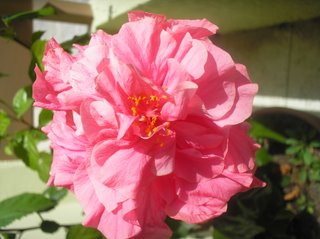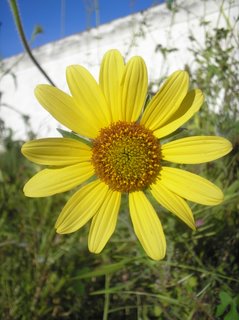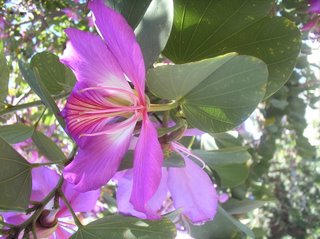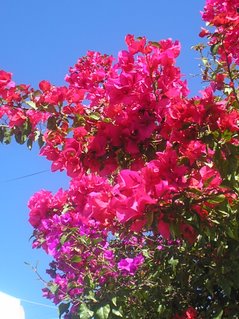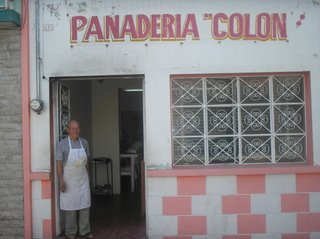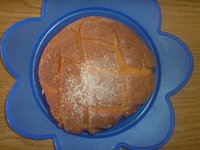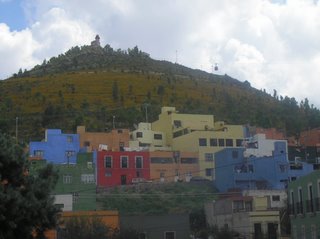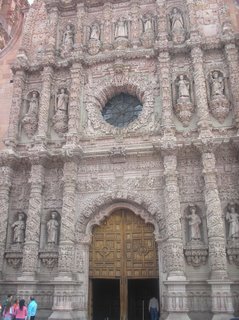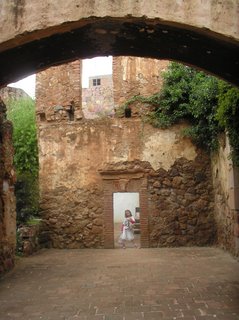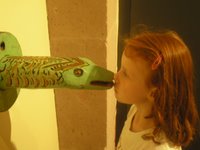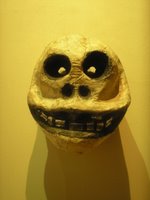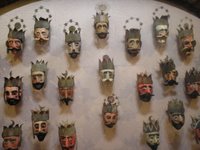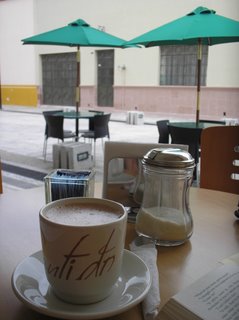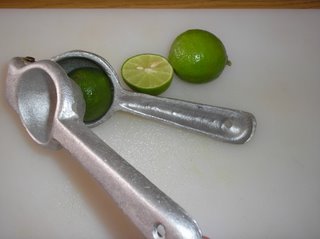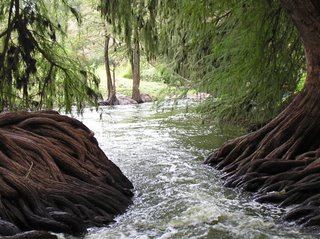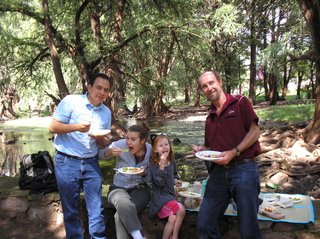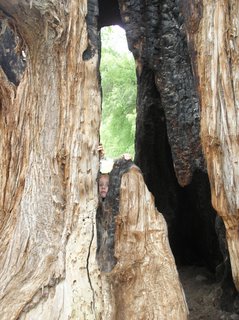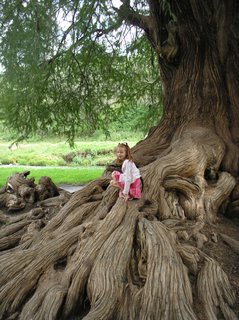On Saturday we visited the city of Zacatecas, about a one-hour drive north of Aguascalientes. Zacatecas is famous for its silver mines. The indiginous people of the area, the Zacatecos, had been extracting silver and other minerals for centuries before the Spanish arrived. Shortly after the conquistaors arrived on the scene in 1548, they began formal mining operations (using the indiginous people of course to perform the heavy and often dangerous work). Much of the silver made its way to Mexico City and eventually Spain and the Spanish who settled the town became rich. The El Bote mine founded 200 years ago, is still in operation today.
Zacatecas itself is quite a picturesque city. It’s comprised of beautiful colonial buildings, narrow streets and hidden plazuelas all situated at the foot of a steep hill called Cerro de la Bufa.
We were suitably impressed by the façade of the cathedral built in 1752. The detailed stone carvings are incredible. The inside of the building though is less than spectacular and indeed the Guadalupe church here in Aguas is far more impressive.
Probably the highlight of our day-trip was our visit to the Museo Rafael Coronel.
The setting of this magical museum is a 16th century former convent. We walked through room after room of stunning, whimsical and sometimes scary masks. There are reportedly over 2000 of them on display here. Quite a sight!
It was a tough decision, but we decided to head out of town before the start of the 5th annual Festival International de Teatro de Calle. We wanted to be well on our way throught the winding mountain road, south of the city, before darkness fell. It was shortly after we left that it started pouring rain and I’m not sure the openning show, an Italian troupe, would have gone ahead.
Johnny however, being in the right place at the right time, managed to secure two spots at the festival this coming week.
Photos will be published in the next post.
